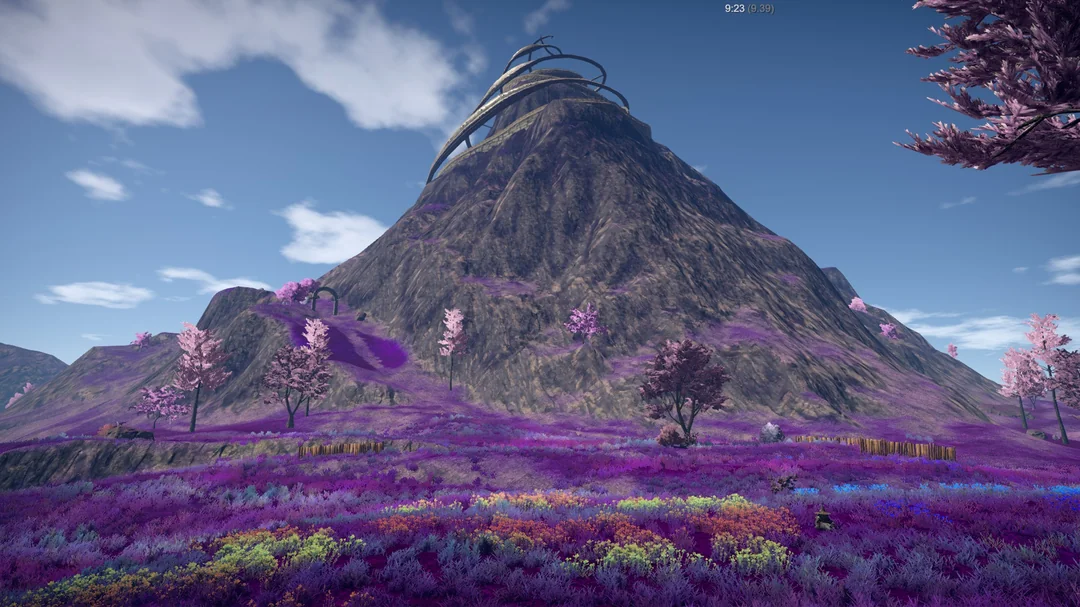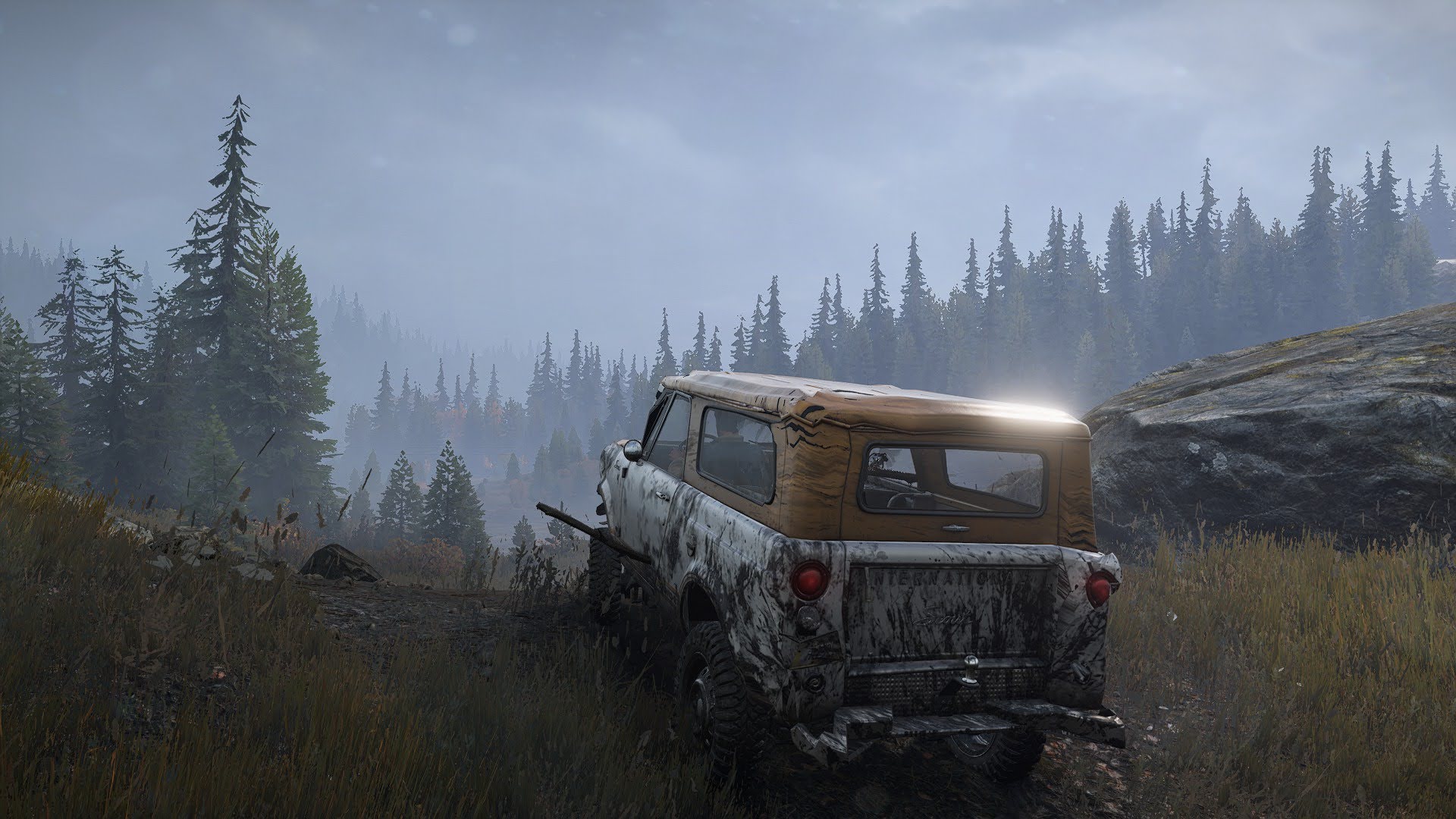The joys of leaving the map behind
This line of reasoning was the main reason I named this blog “Unmapped Worlds,” but it’s a topic I haven’t yet written about. Probably because I’ve feared that this article would need to be great, but the longer I’m putting it off, the more I feel like this needs to be amazing. In reality, it’s not a revolutionary take; I just want to talk about how some great games handle navigation and traversal.
This isn’t about realism - it’s about engaging gameplay: navigation is a fun challenge and a puzzle to be solved, it introduces risks, expands rewards, and is what makes digital worlds truly open up.
I’ll be talking about titles like Outward, Death Stranding, Snowrunner, and some others that will likely come to mind as I write.
Playing Outward is what prompted me to really think about what makes navigation in some games so engaging (and in some, not so much). But first, let’s talk about the goddamn mini-map. I really don’t like mini-maps, even in games where they work thematically (excuse me, are you telling me Geralt has a GPS in his pocket?). Mini-maps take away from a breathtaking, beautiful world developers crafted and make you look at a tiny, pixelated version of it instead. This sucks.
Worse, it can make developers lazy. Why design environmental clues which can lead the player in the right direction when a mini-map with some magic markers on it could do the trick? Why build roads between towns that make sense? Why create interesting landmarks on the horizon?
When you remove these elements, games get a lot more interesting, especially when you take away the GPS. Back to Outward. Outward does provide you with a map - in fact, the map is open from the get-go, and you get to see everything the world has to offer. Except, wait, how do I know where I am? And that’s where the fun begins. There’s no magic “you are here” arrow.
 Conflux mountain in Outward is an ever-present landmark visible from every corner of the map.
Conflux mountain in Outward is an ever-present landmark visible from every corner of the map.
In Outward, you have to navigate using the environment. Without spoiling later areas of the game, the first region does an incredible job with this: the massive, purple, weird-looking Conflux mountain is always in the center of the map. There are other large, visible, unique landmarks scattered throughout. At any point during your travels, you can see a minimum of two, but usually three, unique landmarks, allowing you to accurately triangulate your location.
And boom - the player is forced to engage with the world, forced to pay attention. It’s a beautiful world to get lost in, and it’s fun to become adept at navigating your way around the map, able to quickly zip between locations. How novel - getting your player to deeply engage with the game!
This principle isn’t exclusive to hardcore survival games. For Pete’s sake, even Skyrim has something like this: the Throat of the World is visible from most points on the map (although that’s about it). But it doesn’t really matter, does it? You probably haven’t even noticed, because you don’t have to. Yes, you’re not going to get frustrated from getting lost, but I don’t think you’d be as excited finding something or learning more about navigating this beautiful world.
The compass at the top of the screen, with its quest markers and points of interest, actively discourages looking at the world. It creates a feedback loop where the player follows an icon, not a path. The journey becomes a simple act of keeping the marker centered, and the space between objectives becomes meaningless filler.
When a game trusts its world to be navigable, it taps into something fundamental. Navigation is a real-world skill, and game designers can throw curveballs your way - not everything can be shown on the map, and not every terrain is easily passable. All of a sudden, navigating to a quest objective (which isn’t shown on a map) feels earned. Seeing your target is a reward in its own right, a clear demonstration of your skill overcoming the environment.
 Death Stranding: each delivery is a navigation and traversal challenge.
Death Stranding: each delivery is a navigation and traversal challenge.
And then, of course, there is fast travel. Game designers love fast travel because it’s an easy way out of a player getting frustrated or bored. We’ll get to boredom in a second, but frustration is something that can lead to catharsis, and games should be leveraging that, not taking away the possibility of a reward.
How incredible is it to finally make your way into a town after a brutal journey? How tense is it to be lost, running low on provisions, hoping a cave ahead contains a fire and not a monster lair?
Think of Dark Souls (score, I brought up Dark Souls in my essay). Would the journey to Blighttown be as legendary if you could just teleport out of it? Hell no. Blighttown is oppressive, gloomy, dark, and a terrible place to be because you can’t escape it easily. Consequently, getting out of Blighttown is one of the best feelings in the game. It doesn’t matter that there are more dangerous monsters ahead; you’re finally out of that swamp.
Although this brings us to the question of boredom. Is it not tedious to constantly travel the same roads? It can be, and this is where thoughtful design must come in. The world itself needs to be dynamic enough to remain interesting. Perhaps weather patterns change, new enemy patrols appear, or the player’s own growing power allows them to see old routes in new ways. The solution to boredom isn’t always skipping the journey, but making the journey itself worthwhile time and again.
Don’t get me wrong, I’m not anti-fast travel. There’s a time and a place. I, for one, like how Outward’s DLC, The Soroboreans, handles it. There are now merchants throughout all major cities who can take you to any other city… for a fee. Now that I can get behind. It’s somewhat expensive for a new player too, so it’s impractical to fast travel to an undiscovered region. This way you get to enjoy the joys of discovery and not have to trek through a path you’ve already explored if you need something from another region.
This concept of earned, diegetic (that is, in-universe) travel is key. Morrowind did this exceptionally well. Silt Striders, boats, gondolas, the Mages Guild, intervention spells, Mark and Recall, and even the propylon chambers. There are so many ways to fast travel, but they rely on your knowledge of the world and mastery of its systems. You need to be familiar with the Silt Strider or boat network, you need to know which cities the Mages Guild chapters are in, and even if you’re using instant teleportation spells, you must either prepare those in advance (and have to be prudent with your use - there’s only one mark for you to recall to), or you must know where the different temples to teleport to are.
Getting somewhere fast is a reward for mastery and also requires you to already be familiar with the geography.
 Snowrunner: beat up and dirty, my scout’s finally out of the mud, ready to continue the adventure.
Snowrunner: beat up and dirty, my scout’s finally out of the mud, ready to continue the adventure.
This philosophy of deliberate movement finds its expression in games like Death Stranding and Snowrunner, both of which are about purposeful navigation and meticulous traversal. Here, climbing to a high vantage point and looking around to map out your route is not only a viable but a necessary strategy. Moment-to-moment gameplay here really intertwines with careful planning ahead.
In Death Stranding, the landscape itself is the antagonist. A simple river crossing requires you to check the depth and current, place ladders, and manage your balance, turning a mundane act into a tense puzzle. In Snowrunner, the challenge is the physics of mud, snow, and ice. Every inch forward is a victory of torque, tire choice, and finding the one viable path through an impassable bog. These games are not about the destination, but the granular, physical act of getting there. They prove that traversal, when treated as a core mechanic rather than an inconvenience, can be one of the most compelling parts of a game, transforming the simple act of moving through a space into an unmapped world of its own.
Ultimately, compelling journeys aren’t always about grand narratives or flashy combat. Sometimes, they’re simply about the grit of getting from point A to point B, one carefully chosen step at a time, proving that even fundamental mechanics like movement can become the heart of an unforgettable adventure. I’m excited to see developers embrace more deliberate diegetic navigation in games, and trust the players to engage with the worlds they put so much love into crafting.
I still have quite a bit more to say on the subject - from the ways some games opt-outs from over reliance on the mini-map (Assassin’s Creed: Odyssey, surprisingly), to indie games which reimagine traversal mechanics, to deep-dives behind our love for great navigation challenge. But I think that’ll have to wait until another time, or I will never publish this piece.
P.S: If you enjoyed this piece, you might also like to read takes I have on procedural generation in games and how I liked playing Vintage Story without a map.
Comments
Respond directly on Bluesky (threads shown below) or Medium (view comments there).
 Rooslawn's Unmapped Worlds
Rooslawn's Unmapped Worlds